For the Back into the Light exhibition, our deputy director Eva Atlan intensively researched the life and work of the Frankfurt artist Erna Pinner. In the process, she discovered a very special treasure – the artist’s travel books and photo albums.
Four photo albums are on display in the exhibition Back into the Light. Four Women Artists – Their Works, Their Paths. They all belonged to Erna Pinner and are now being shown publicly for the first time. The photo albums are on loan from the artist’s family. In 2014, they contacted us to present part of Erna Pinner’s artistic estate to us as a gift. When I visited England, I was astounded to discover their gift would comprise a total of around 400 drawings and prints. The photo albums that the family planned to loan to the museum were an even bigger surprise. I was totally amazed as I had no idea any such photo albums existed or that they had survived.
A surprising find
Erna Pinner is also known as a successful photographer. Her works were published, for instance, in books written by her partner Kasimir Edschmid (such as ‘Südamerika wird fotografiert’, 1932). As we know from the letters they later exchanged, she could not take any negatives or prints with her when she was forced to emigrate. But the photos in the albums from her estate are private snapshots, typical tourist photos, just like the ones still taken today. If the current exhibition helps us appreciate Erna Pinner as an artist, the photo albums offer a real insight into her as a person.
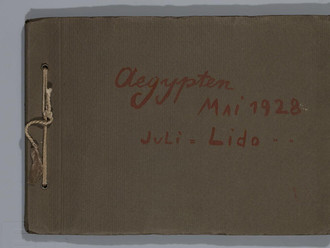
Erna Pinner's photo album Egypt, May 1928 / Lido in July 1928
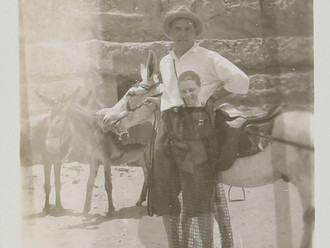
Erna Pinner and Kasimir Edschmid in Egypt, May 1928. Yet, nonetheless, these photo albums are a unique and remarkable contemporary document of Erna Pinner’s travels from 1927 to 1931 to Greece, Italy, Egypt, South America (Bolivia and Peru) and the Middle East (Syria and the British Mandate of Palestine).
Document and snapshot
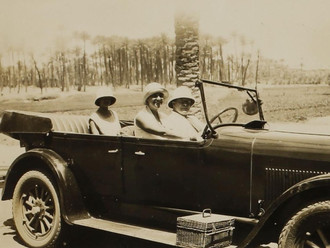
How did people travel in the 1920s? What means of transport were available to Erna Pinner and her fellow travellers? Here, Pinner had herself photographed in a car with Kasimir Edschmid sitting next to her. She is in the driving seat.
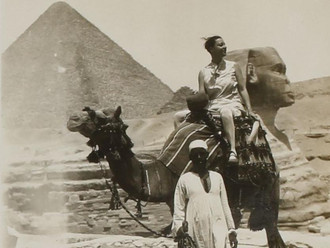
On her travels, Pinner – here on a camel in Giza – also used a country’s typical means of transport. For this shot, she posed so her profile is set against the Sphinx in the background .
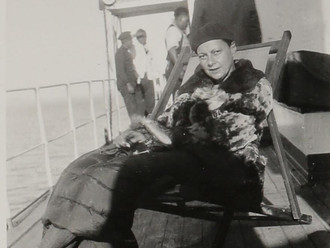
Here we see Erna Pinner in Bolivia, she is sitting in a deckchair on a steamer crossing Lake Titicaca, the world’s highest commercially navigable lake.
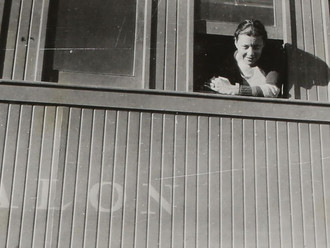
On the way from La Paz, Bolivia, she looks out into the camera from a railway carriage window. There are many such snapshots reminding us, as we look at them, of how we also like to capture every important moment when we travel as tourists.
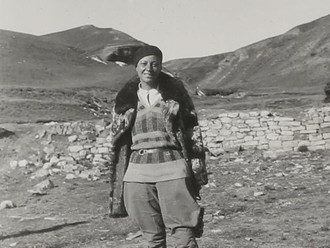
In this photo taken in Bolivia, Pinner is standing in a barren hilly landscape. She is wearing knickerbockers, a chequered pullover, and a warm jacket. Under the photo, she wrote a note: 4800 metres, Bolivia. This evidently not only testifies to her definite wish to capture the moment, but also to her pride in reaching this height on what was certainly an arduous journey. After all, Erna Pinner had contracted polio some years before and usually needed a walking stick, even if she often left it out of her photos.
Tourist destinations
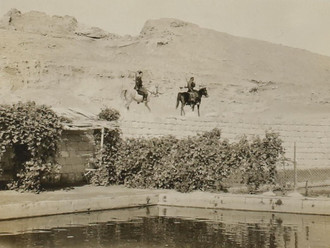
On her trip through the territory of the British Mandate, Erna Pinner took a photo of Elisha’s Spring (also known as the Prophet’s Fountain; Elisha/Elisa was a disciple of the Prophet Elijah). This sweetwater spring is close to the archaeological site on Tel Jericho hill where remains of a settlement from 8000 BCE have been found.
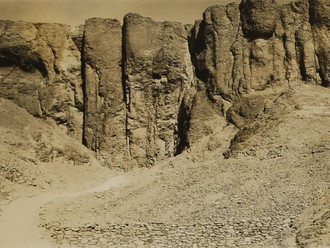
In Egypt, she was fascinated by the Valley of the Kings...
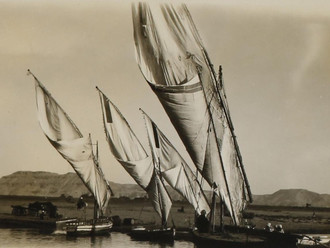
as well as the traditional felucca boats on the Nile.
Social life on her travels
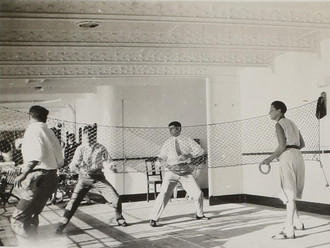
Apart from viewing archaeological excavations and other cultural treasures, how else could you spend your time on journeys? With sporting activities, for instance, when travelling by ship in South America.
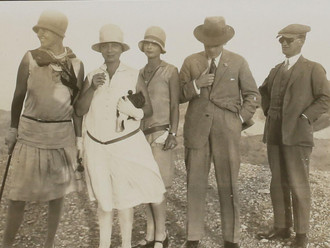
Erna Pinner took many photos of people she met, including other travellers or diplomats such as Dr. Erich Nord, German Consul General, with his family in Jerusalem.
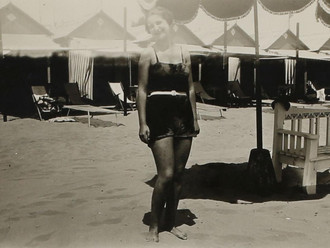
Venice and, above all, the Lido were fixed points on the itinerary of her long-distance journeys. This was where she left by ship for her destinations around the Mediterranean Sea and in the Middle East. She also stopped off in Venice on her return to recover from the hardships of her journeys. Here, too, she met people she knew, for instance, the young Lily Schnitzer-Capellini (Arthur Schnitzler’s daughter), dressed in her beach suit and apparently smiling happily into the camera. This photo was taken in July 1928, and on 26 July that same year she committed suicide for unknown reasons.
Meeting indigenous peoples
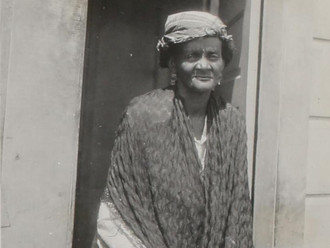
Of course, these albums also contain many photos of the indigenous peoples Erna Pinner met. In these photos, she tries to gain an insight into each person’s character and reproduce it in her portraits as, for instance, in this shot taken on the island of Curacao. The woman, shown in profile, seems lost in thought as she gazes out of her house into the distance.
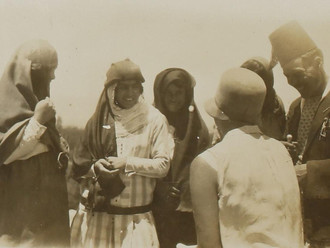
A photo taken in the British Mandate territory beautifully illustrates Pinner’s genuine interest in people and desire to come into contact with them. Even though these albums have many shots, often posed, of Pinner beaming into the camera, this photo is quite different and far more revealing on a personal level. Seen from the back, Pinner is standing with a group of four women and a man (Bedouin?) and the smiles on their faces tell us a lot about the woman they are talking to.
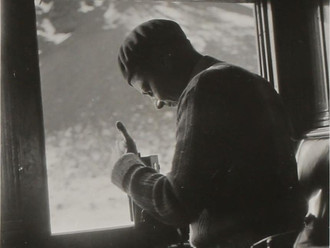
I would like to end this brief look at these numerous photographs with the photo of Erna Pinner sitting at the window of a train carriage on the way to Cuzco, Peru, intensely occupied with her Leica as she takes photos from the moving train.
The photo albums shown here in excerpts are available as facsimiles in the exhibition "Back into the Light" and can be viewed by visitors there.



Noch keine Kommentare. Diskutieren Sie mit.
Ihr Kommentar